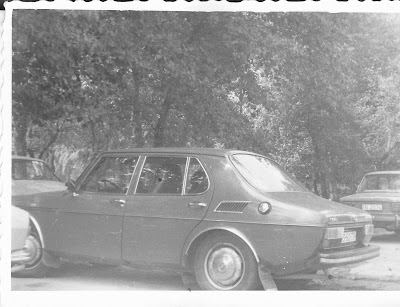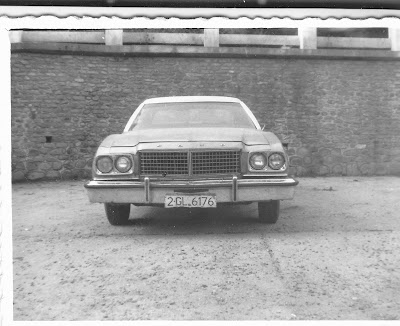Unul din acei tineri era dl Catalin Radu, care, prin amabilitate, mi-a trimis niste poze cu totul exceptionale, surprinse la Bucuresti, pe litoral si la Calimanesti, in perioada 1977 - 1982. Unele masini sunt modele relative comune in Romania, in mod special botul de cal, broscuta, si Volvo-ul. Altele - mai ales americanele si Honda - sunt raritati. Preferatele mele sunt Citroenul si, ca proprietar de asa ceva, Saabul. Unele sunt in trecere prin tara iar altele sunt inregistrate in Romania, desi, fapt interesant, nu cu numere de nomenclaturist, si nu necesar numai din Bucuresti.
Tin sa ii multumesc pentru faptul ca mi-a trimis aceasta fascinanta colectie pentru publicatie. Contributii de catre cititori sunt intotdeauna binevenite: multe aspecte fascunante din istoria auto a Romaniei, sunt sigur, inca exista incuiate in vechi albume, sau ascunse printr-un sertar (sau, de ce nu, un garaj ...
In the 1970s and 1980s, when Bucharest, the Black Sea Coast and the main inland resorts were frequently visited by foreigners, there was often a secondary wave of tourists: young Romanians, car enthusiasts, who travelled up to see the open-air motorshow. Some came just to see, while others took photos of these cars which, especially after 1975, were rather different from what you'd see every day.
One of these was a young Catalin Radu, who decided to send me scans of the exceptional pictures he took between 1977 and 1982, in Bucharest, by the seasde and at Calimanesti. Some were relatively common in Romania, for example the Mercedes, VW and Volvo. Others - especially the Americans and the Honda - were extremely unusual. My favourites are the Citroen and, unsurprisingly given that I own one, the SAAB. The cars are a mixture of foreign- and Romanian-registered; interestingly, though, the Romanian ones don't carry nomenklatura plates, and neither are they all from Bucharest.
I'm very grateful for being allowed to publish this fascinating and important collection. Indeed I always welcome contribuitons from readers: I'm sure that, locked away in old albums, or nestling in a drawer (or a garage), many discoveries remain...
SAAB 99 din Cehia
Audi 80
BMW si Polo. Mai exista in acea perioada un Audi 50 in Cluj:
Chevrolet Impala 1969, masina enorma, si in stare destul de obosita
Mercedes "bot de cal", emblema de bunastarea anilor 70
VW Polo din nou
Ford Gran Torino 1974 / 1975 - varianta sedan a coupe-ului imortalizat in Starsky and Hutch
Dacia "tunata" - de Dambovita
DS de Constanta
Fiat 131
Honda Prelude, aproape nou nouta, proprietatea unui cetatean strain
Opel Manta, silueta sportiva pe langa Dacia 1100
Renault 9 cu numere romanesti
Volvo
Si terminand cu o broscuta in doua culori.


































